Have you ever wondered how that beautiful marbled paper found inside and on the covers of old books is made, or where it comes from? At the National Art Library we have huge amounts of this once common place material, and I am regularly hypnotised by these fantastic patterns!
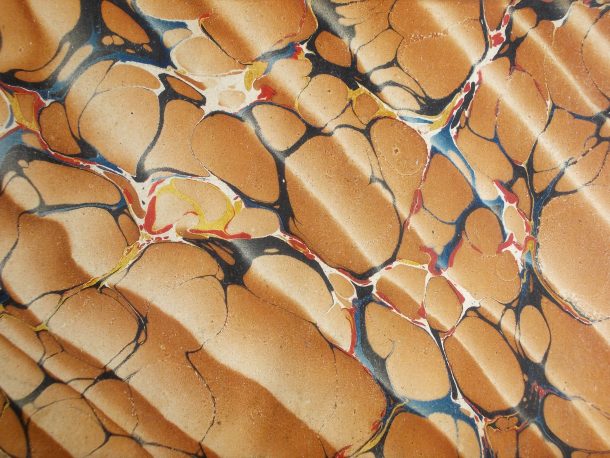
The technique of marbling paper has been viewed as somewhat mystical in the past, approaching alchemy. Marblers were careful to keep their methods secret, and there are tales of masters working in rooms where every crack and hole has been sealed to thwart spies. In short, it is created by floating paints on a liquid in a tray, and laying the paper on the resulting pattern. In 1627, before marbling had become popular in England, Francis Bacon described the process in his book ‘Sylva Sylvarum’:
“The Turks have a pretty art of chamoletting papers, which is not with us in use. They take divers Oiled Colours, and put them severally (in drops) upon water, and stirre the water lightly; and then wet their Paper (being of some thicknesse) with it; and the Paper will be Waved and Veined like Chamolet, or Marble.”
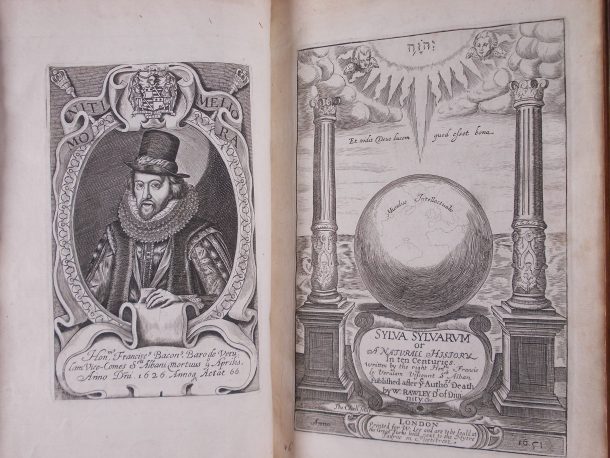
Marbling is infamous for being temperamental – creating consistent patterns requires a great deal of practice, and this was important for marblers who were supplying paper to bookbinders, who wanted a reliable source of the same pattern for their work. It involves gruesome ingredients like ox gall (the fluid extracted from the gall bladders of cattle) which is mixed with the paint. Various patterns can be created by drawing a comb through the paint – different combs produce different results. Not satisfied with just having marbled endpapers, many binders marbled and polished the edges of their books as well.
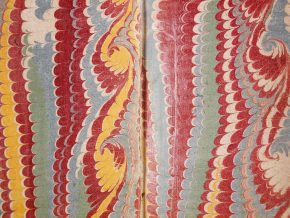
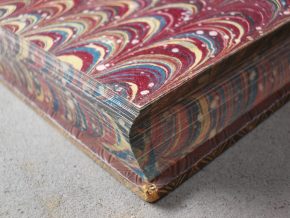
But where did this ingenious craft come from and how could anyone have conceived of it? Some of the earliest examples of marbled paper we have in the National Art Library are to be found in the album amicorum of Wolfgang Leutkauff. An album amicorum was a book in which one’s friends and associates would sign their names, often accompanied by their coats of arms. Like many others from the same era, Leutkauff’s is full of decorated papers and painted miniatures as well as the usual autographs, arms and writings in various languages. The material was gathered and bound in Turkey in the early seventeenth century. At this time marbling had been practised in Turkey for centuries (and probably originated nearby in Persia) but in Europe marbling workshops were only just beginning to be set up.
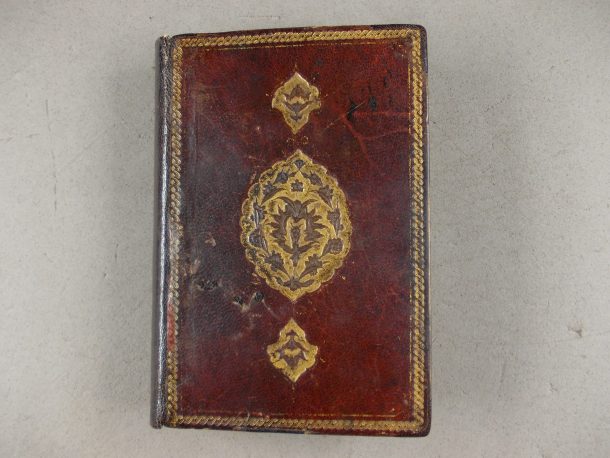

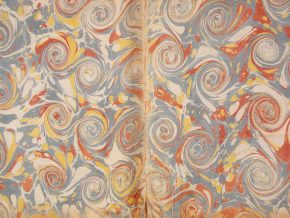
The first marbled papers produced in Europe were probably made in early seventeenth century Germany, which already had a lively trade in decorated paper. However it was the French who established the close connection between marbling and bookbinding which is still strong today – in the seventeenth century marbled paper was used to line boxes and decorate furniture and other items, but now it is almost exclusively associated with fine binding. By the late seventeenth century German binders had succumbed to the obsession as well and the marbling trade thrived alongside the bookbinding industry until its decline. Marblers continued to refine and improve the craft during the eighteenth century, and patterns became more consistent and abundant. However, in some places marbled paper was still quite scarce and of low quality – witness this attempt in a book from Madrid, 1788:
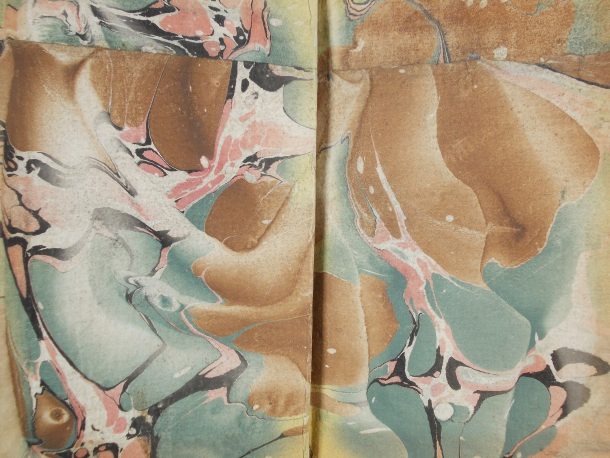
While marblers had been producing large amounts of paper in Europe since the mid seventeenth century, it wasn’t until late in the eighteenth century (roughly the 1770s to the 1780s) that Britain reached a similar level of output – despite the basic technique being known. There are instructions in Godfrey Smith’s ‘The laboratory, or, School of arts’, first published in 1738 – an intriguing book containing instructions for all sorts of wonders, including counterfeiting gemstones, making fireworks and how ‘To prepare ink, so that what is writ therewith cannot be read but in a dark Place’. Smith’s description is much more detailed than Bacon’s of a century before, and includes specific recipes. It also gives these delightfully vague instructions for making patterns:
“If you would have some turnings or snail-work on your paper, then with a bodkin give the colours what turns you please.”
Before marbling took off in Britain, bookbinders here used marbled paper imported from France and Germany. Once a local supply was available, however, they became even more addicted to it than their European counterparts and the British marbling industry flourished. Manuals dedicated to the technique of marbling aided the development of the art in this country – one such manual was Charles Woolnough’s ‘The whole art of marbling’, the third edition of which we have at the National Art Library.
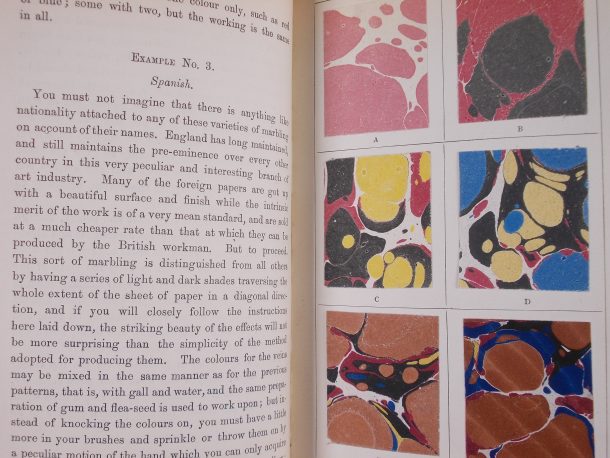
This book, first published in 1853, contains an unprecedented amount of detail on exactly how to produce all the popular patterns of the day, and explains the underlying principals of the craft. Woolnough had little respect for earlier descriptions of marbling, which were for the most part not of much practical use – he wrote in the introduction to his book:
“There have been many receipts given and articles written and printed in Cyclopaedias and works of a similar character, but the methods therein described are so utterly ridiculous that anyone possessing the smallest amount of knowledge on the subject must treat them with contempt.”
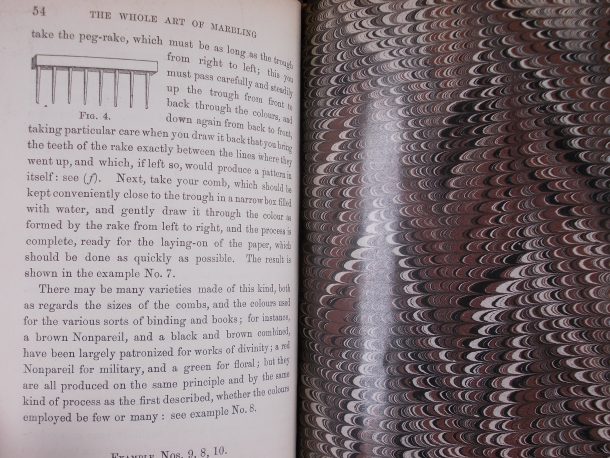
In the preface to the third edition he also displays a certain amount of contempt for the secretive marbling masters who he outraged by publishing such a detailed guide:
“perhaps as strong an evidence of the truthfulness and practical utility of the work as can be obtained from the encomiums of some, may be deduced from the hostility and bitterness of others, who, in the mistaken idea that their secrets were revealed, their rights invaded, and their pecuniary interest endangered, have given vent to their spleen by heaping upon him [the author] a variety of abuse, contumely, annoyance, and persecution. However, as he never had the least particle of instruction, information, or help of any kind from any of them (in fact, the majority of those who bear the names of masters possess but a very limited amount of knowledge of the principles and practice of the profession, and still less ability to impart it), he considers that he has an indisputable right to make use of the knowledge he has acquired by dearly bought experience and labour as he may deem proper.”
‘The whole art of marbling’ also contains revealing anecdotes about the cut-throat world of nineteenth century book production. Woolnough relates how he was “honoured by our worthy transatlantic brethren” – his work was reprinted without permission in a text on bookbinding by some publishers in Philadelphia, who exported it to England as well as selling it in America. He also describes a comical encounter with an impoverished would-be marbler who is trying to publish a pamphlet made of pages from ‘The whole art of marbling’. Woolnough was even cheated by the butcher who supplied his ox gall – the butcher would dilute the ox gall fluid with water, fill empty bladders with it, then sell them to him at full price!
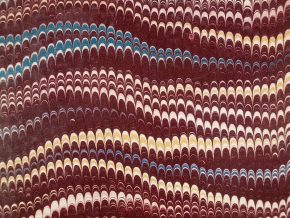
The nineteenth century saw the art develop all over the world as well as in Britain. By this time America had an established trade and the European industry continued to grow. Technological innovations increased production and consistency – marbling machines were invented, and paints were produced specifically for marbling. It was in this era that the company of Alois Dessauer in Aschaffenburg developed into one of the largest producers of decorated papers in the world. The company was in business for over 150 years, lasting well into the twentieth century. They produced hundreds of different papers of various kind, including gilt and printed pattern papers as well as some of the most fabulous marbled paper available – which can be seen in the sample book below.
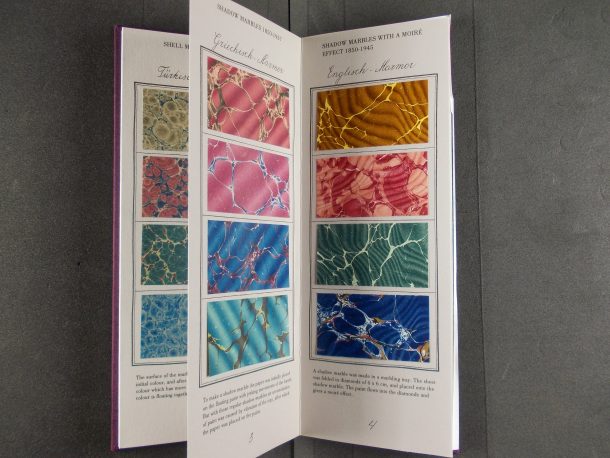
While the nineteenth century saw the marbling industry peak, it also saw it rapidly decline. Increasing mechanisation changed how books were produced – cheaper cloth bound books with little decoration became the standard, and by the beginning of the twentieth century the paper was only really used for fine binding work by the remaining hand bookbinders. However small workshops and individual artists have kept the craft alive and continued to innovate. This sample book of Payhembury papers from 1987 is an example of this later, small scale production:
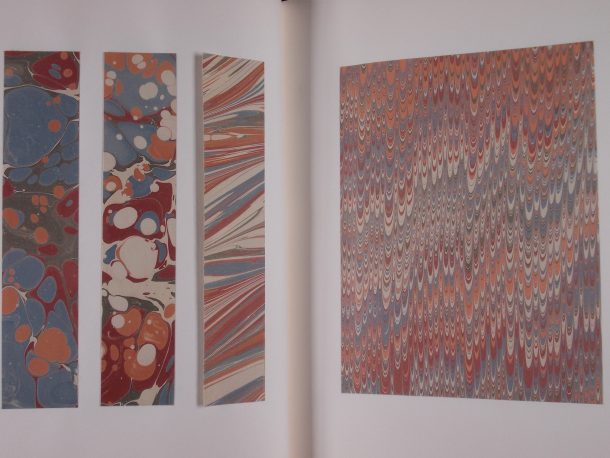
I hope you have enjoyed rifling through the National Art Library’s exquisite examples of marbled paper. If these images have triggered the all too common marbling madness in you, come along to the library! Just do try not to drool on anything – while marbled paper is surprisingly resistant to saliva, it’s definitely not good for it…
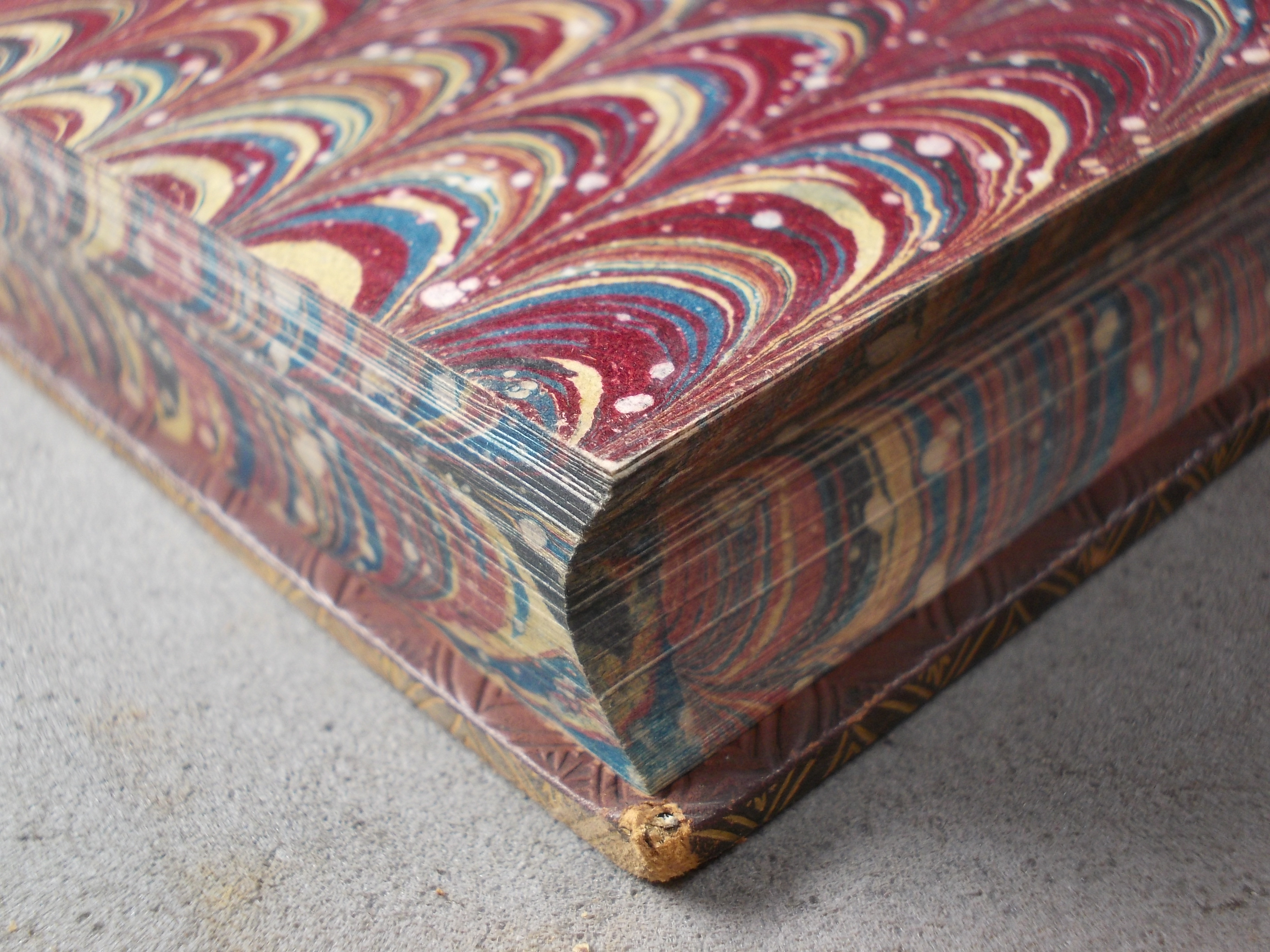
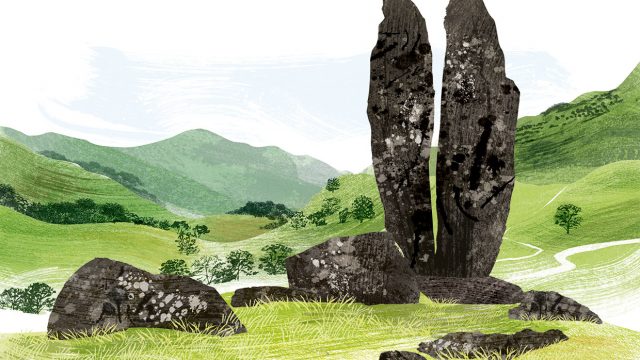
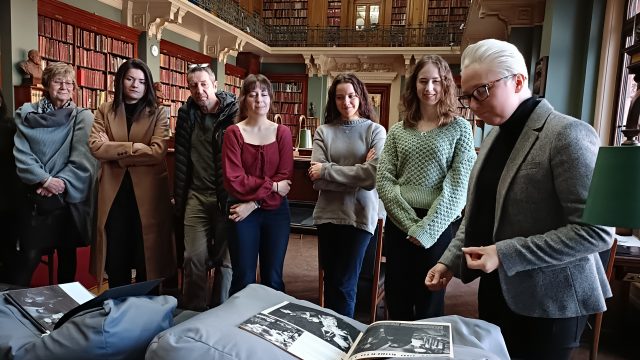
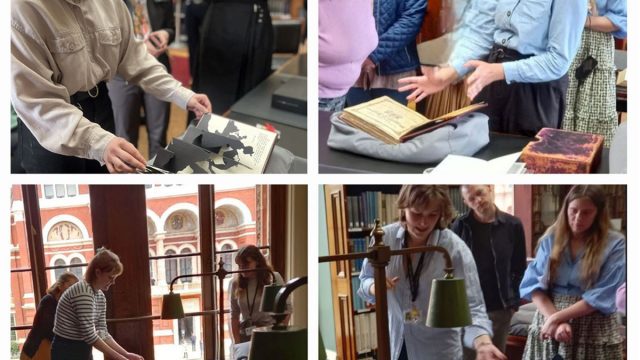
Terrific article. I read elsewhere that Leutkauff’s album dates to 1616 and 1632. Interesting that it is bound in an Ottoman cover, as most of the other surviving albums are bound in European style bindings.
Another exhibition up at the moment, “Alter Ego” at the BNU in Strasbourg features other alba amicorum:
.
The catalogue includes a brief essay by Nedim Sönmez, who has extensively examined the Turkish papers found therein.
Finally, if readers are interested to learn more about the art of marbling, please visit the International Marbling Network at . There is a forum, gallery, bibliography, and many other resources.
Reading, for once, an almost flawless account of how paper marbling came into being in the West is a delight I’ve enjoyed all too rarely in the past years. Besides offering my thanks and congratulations, I’d like to mention that there is more to decorated paper than ‘just’ marbling. The V&A has a nice educational collection of basics – for more, the study of Philippa Marks: An Anthology of Decorated Papers. is a very good start.
Thank you for posting this. I have been marbling paper and fabric since 1985 and it still amazes me how many people I meet that have never seen or heard of this art form. Education is So valuable.
We did marbling on paper in school, and the key was the medium on which the ink/paint floated was key. We used something that gelled. Not too much, not too little. It was fascinating.
Having just accessed this article via the V&A membership Monday’s Newsletters during Covid -19 lockdown, thought appropriate to leave comment.
Thoroughly enjoyed reading about this topic. Have always admired these decorative patterns in old books, but never thought about their production. Fascinating insight, it would be a good to know if there is a contemporary method, it would make a good workshop.